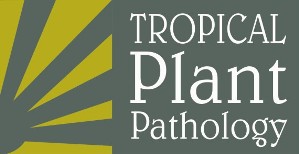Viruses may induce metabolic and structural disarray in plant cells to varying degrees depending on viral species and plant susceptibility. With this focus, grapevine plants (Vitis vinifera) cvs. Cabernet Franc and Cabernet Sauvignon, symptomless and showing symptoms of virus-infection, in two commercial vineyards were comparatively analyzed. The parameters were: 1. photosynthetic potential (light-saturated rate of photosynthesis, saturating light intensities, light compensation point, dark respiration rate, apparent quantum yield, chlorophyll a and b); 2. foliar carbon metabolism (total soluble sugars and starch), and 3. enologic quality of the produced grapes (total soluble solids - ºBrix, density, pH and titerable total acidity in the must; total color intensity and total polyphenols in berry skins) were recorded. In symptomatic plants Grapevine leafroll-associated virus 2 (GLRaV-2) and Rupestris stem pitting-associated virus (RSPaV) have been detected by ELISA carried out for six viruses. The virus infections induced significant reductions in chlorophyll content and in photosynthetic potential of both cultivars. Leaves of infected plants also showed significant accumulation of carbohydrates, suggesting a blockage of carbon transport out of these tissues. Concerning the enologic quality and based on technological parameters of the must (ºBrix, density, titerable total acidity and polyphenols), grapes of infected plants showed at harvest a significantly lower level of maturation. These viruses directly affect the productive capacity as well as the quality of the grapes produced by these cultivars.
Vitis; RSPaV; GLRaV-2; photosynthesis; sugars; grape






